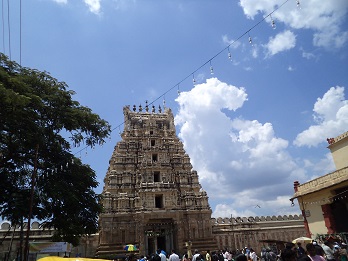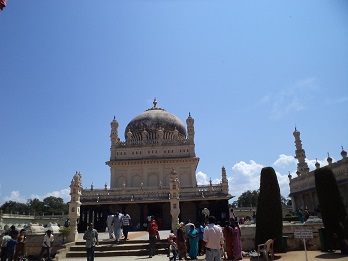The fort destination of Srirangapatna has a host of outstanding heritage landmarks that can make travellers flabbergasted.
Swaati Chaudhury
It is not often that we get to travel to medieval destinations teeming with history and heritage. During my whirlwind tour of Mysore, an opportunity to visit Srirangapatna, the bygone capital of Mysore was a wish come true. The very mention of Srirangapatna evokes tales of valour of Tipu Sultan. The destination has been the seat of many legendary rulers of Karnataka ranging from the Ganga dynasty to Haider Ali and Tipu Sultan. Nestling in the Mandya district of Karnataka and around 18 km from Mysore, Srirangapatna is a historic island retreat on the banks of river Cauvery and was renowned as Srirangapatnam in the Raj era.
The ancient destination of South India has earned the World Heritage tag and is home to stunning monuments including shrines, palaces, mausoleums, and a fort that entices history buffs like no other. There are several must-visit sites for travellers. The 15th-century Srirangapatna fort came up in the form of a mud fort way back in 1454 during the times of the Vijaynagar Empire. It was later revamped by Tipu Sultan and constituted a major military base. Spread over 240 acres of area, the historic fort is on Bangalore-Mysore Highway and has four towering gateways including Delhi, Bangalore, Mysore Gates et al. The double-walled fort represents Indo-Islamic architecture and houses an armory house.
We started off exploring the fort town of Srirangapatna with the grand Ranganathaswamy temple which figures as one of the largest and highly revered shrines in the country. Discovery of the Chola dynasty, the 1,100-year-old shrine dates back to the 9th century and has the deity of Lord Vishnu along with his consorts- Sri Devi and Bhu Devi. The sanctum sanctorum houses the presiding deity and has huge rampart walls all around. The strikingly elegant shrine exhibits Dravidian architecture and the shrine complex sprawls over 156 acres of land area. The walls of the shrine are done up with fresco and colourful mural paintings with figures of prominent Hindu pantheons. The main Gopuram rises at a height of about 236 feet and ranks as the second tallest temple tower in Asia. Pilgrims have to wait in long queues to offer the puja. The town of Srirangapatna derives its name from the shrine.
After visiting the shrine, head to Gumbaz, the spectacular mausoleum in the eastern part of the town that has been the brainchild of Tipu Sultan to pay tribute to his illustrious father, Haider Ali. Built in 1784 AD, the mausoleum commands a picture-perfect setting and has cenotaphs of Haider Ali, his wife, Fakhr-un-Nisa, and Tipu Sultan. The mausoleum rests on a stone plinth with polished granite black pillars and is crowned by a magnificent dome showcasing Islamic art. At the eastern end of the mausoleum is a memoir that depicts the downfall of Srirangapatna and the death of Tipu Sultan in 1799 AD.




There is Tipu Sultan’s Summer Palace reputed as Dariya Daulat Bagh which forms a bucket-list destination. The palace formed the summer resort of Tipu Sultan and offers valuable info about the bygone kingdom of Mysore. It was Haider Ali who laid the foundation of the palace in 1778 and was later completed by Tipu Sultan. The two-storied palace is carved out of teak wood and is set amid a picturesque garden. It is built on a raised platform and the Tipu Sultan Museum is on the top floor.
One has to devote a plethora of time to the palace. There are colourful paintings on the walls of the palace illustrating significant historical events like the Battle of Polilur or the Second Mysore War (1780-1782 AD). We had a whale of a time admiring the mural paintings depicting portraits, the procession of Nizam of Hyderabad, the war processions of Haider Ali and Tipu Sultan, their victories, and the invasion of Srirangapatna. There are attractive paintings of works of Ali Raza Khan, the advocate of Tipu Sultan. Besides, there are exotic royal treasures like the Persian manuscript, war weapons, gold coins, silver bowls, dresses, and furniture used by Tipu Sultan. With the demise of Tipu Sultan, the palace was occupied by Col. Arthur Wellesley who later became the 1st Duke of Wellington. Overall, the palace boasts a sound collection of antiques.
How to reach Srirangapatna: The nearest airport is at Mysore while Bangalore is nearly 140 km from Srirangapatna.
Accommodation: Srirangapatna has a fair number of hotels but it is convenient to halt in Mysore.
Also Read
Watch on Youtube
